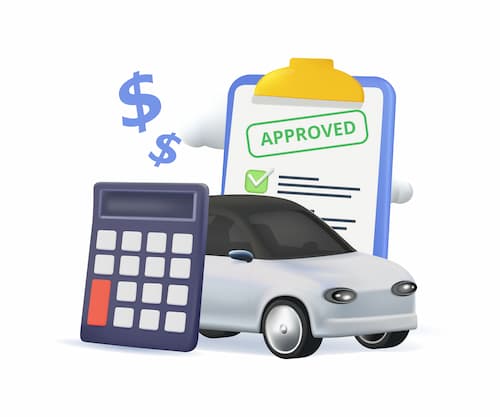- How do age and gender affect the average cost of car insurance?
- How does age affect average car insurance rates in your state?
- Average car insurance rates by age and company
- Why does age affect car insurance rates?
- At what age does car insurance go down?
- Which states don’t allow age as a rating factor for car insurance?
- How does gender affects car insurance rates, and why?
- Which states don’t allow gender as a rating factor for car insurance?
- Methodology
- FAQ: Car insurance rates by age and gender
How do age and gender affect the average cost of car insurance?
Teen drivers pay the most for car insurance because they have less experience on the road, and teen males pay the most. For example, at 16, a male pays an average of $7,530 for car insurance, while a female 16-year-old pays an average of $6,742.
By age 40, male drivers pay an average of $1,895 per year for full coverage car insurance, while female drivers pay $1,894. Rates decline with maturity and experience on the road.
Compare car insurance rates by age and gender below.
| Driver age | Female | Male |
|---|---|---|
| 16 | $6,742 | $7,530 |
| 17 | $5,615 | $6,261 |
| 18 | $4,943 | $5,533 |
| 19 | $3,871 | $4,360 |
| 20 | $3,527 | $3,935 |
| 21 | $2,953 | $3,226 |
| 22 | $2,745 | $2,962 |
| 23 | $2,578 | $2,751 |
| 24 | $2,448 | $2,590 |
| 25 | $2,219 | $2,291 |
| 30 | $2,003 | $2,014 |
| 35 | $1,941 | $1,947 |
| 40 | $1,894 | $1,895 |
| 45 | $1,868 | $1,865 |
| 50 | $1,783 | $1,790 |
| 55 | $1,725 | $1,743 |
| 60 | $1,704 | $1,724 |
| 65 | $1,728 | $1,752 |
| 70 | $1,819 | $1,859 |
| 75 | $1,969 | $2,046 |
People ask
Which gender pays more for car insurance?
Males generally pay more for car insurance than females, but this difference is most notable in younger drivers. By age 40, the difference disappears.
How does age affect average car insurance rates in your state?
While the general trend of younger drivers paying more for car insurance often holds true, it’s more pronounced in some states than others.
- 16-year-olds in Alaska pay an average of $539 monthly for full-coverage car insurance. 50-year-olds in the same state pay an average of $130 monthly for the same coverage.
- In contrast, 16-year-old drivers in Florida pay an average of $919 per month for full-coverage car insurance, while 50-year-old drivers in the same state pay an average of $220 per month.
The table below displays the average car insurance rates in each state by age.
| Company name | Average annual premium | Average monthly premium |
|---|---|---|
| Allstate | $3,569 | $297 |
| Farmers | $3,261 | $272 |
| GEICO | $2,214 | $185 |
| Mercury Insurance | $3,358 | $280 |
| National General Insurance | $3,103 | $259 |
| Nationwide | $2,150 | $179 |
| Progressive | $2,902 | $242 |
| State Farm | $2,119 | $177 |
| Travelers | $2,356 | $196 |
| United Automobile Insurance | $2,796 | $233 |
People ask
How much more does a 16-year-old pay for auto insurance each month than a 50-year-old?
It depends on a number of factors, including driving record, but on average a 16-year-old male pays $5,740 a year more than a 50-year-old male, and for female drivers the difference is $4,959.
Average car insurance rates by age and company
Some insurance companies are more willing to work with young drivers, which is reflected in lower average costs or discounts designed for young drivers.
For example, Allstate and Farmers tend to have higher rates for 16-year-old drivers than USAA and GEICO, which offer rates on the lower end for young drivers.
However, middle-aged drivers tend to find the lowest rates with USAA, Nationwide, and Travelers; USAA is only available to military community members and their families.
Below, you'll find car insurance rates by company and age.
| Company Group | Average annual premium | Average monthly premium |
|---|---|---|
| Allstate | $9,968 | $831 |
| Farmers | $11,592 | $966 |
| GEICO | $6,375 | $531 |
| Nationwide | $6,094 | $508 |
| Progressive | $9,295 | $775 |
| State Farm | $6,339 | $528 |
| Travelers | $6,334 | $528 |
| USAA | $6,239 | $520 |
Why does age affect car insurance rates?
Age affects car insurance rates because it's statistically correlated with the odds of a claimAn insurance claim is a request you make to your insurance company for coverage after your car is damaged or you have an accident. You can file a claim online, by phone, or in writing.. Younger drivers are more likely to cause an accident and file a claim.
Insurance companies rely on extensive data to determine car insurance rates, and that data shows that younger drivers are at a much higher risk to insure because they’re inexperienced on the road and have more accidents. The Insurance Institute for Highway Safety (IIHS) reports that drivers aged 16 to 19 have a fatal crash rate three times higher than drivers aged 20 and up.
Insurers compensate for this higher risk by charging younger drivers higher premiums.
At what age does car insurance go down?
Car insurance rates go down every year as you get older, until age 60, when drivers see the cheapest average rates.
- Although it's often stated that rates drop at age 25, there are continuous reductions each year. After age 25, the reductions are generally smaller.
- Rates are affected by numerous factors, so it's not guaranteed that your rates will go down as you age. If, for example, you are involved in an at-fault accident, get a ticket or buy a new car that's more costly to insure, you'll see higher rates.
- Rates start to increase again after age 65, but not nearly as much as for teen drivers.
Which states don’t allow age as a rating factor for car insurance?
These two states don’t allow age as a rating factor:
- Hawaii
- Massachusetts
In every other state, your age will affect your rates. Note that in Massachusetts, insurance companies can still use years of driving experience for rating, which means that a 16-year-old will pay more due to lack of experience, but so, too will a newly licensed 30-year-old.
How does gender affects car insurance rates, and why?
Gender affects car insurance rates because, again, there's a statistical correlation between gender and the likelihood of an accident,
Male drivers pay more for coverage they’re more likely to get into accidents than female drivers. This difference is much bigger for younger drivers; older male drivers pay rates similar to females of the same age. The IIHS reports a higher incidence of fatal crashes among young male drivers; two out of three involved a teen male driver.
Which states don’t allow gender as a rating factor for car insurance?
The states that don’t allow the use of gender as a rating factor are:
- California
- Hawaii
- Massachusetts
- Maine
- Michigan
- Montana
- North Carolina
- Pennsylvania
In other states, your gender will impact your car insurance rates.
Methodology
We partnered with Quadrant Information Services to field car insurance rates across all 50 states and Washington, D.C. and for ages ranging from 16 to 75.
Averages are based on our full coverage data set. This data set is based on:
- Bodily injury liability of $100,000 per person and $300,000 per incident
- Property damage liability of $100,000 per incident
- Comprehensive and collision deductibles of $500
- Honda Accord LX
- Good credit
- A clean driving record
- 12-mile commute, 10,000 annual mileage
Learn more about our data and methodology.
FAQ: Car insurance rates by age and gender
What age does car insurance go down for males?
Rates go down each year; there is no specific age at which rates drop. Rates are the lowest for male drivers at age 60.
At what age do insurance rates go down for females?
Female drivers will see their insurance rates go down every year, as long as they keep a clean driving record. Rates are the lowest at age 60.
Which gender pays more for car insurance?
Men tend to pay more for car insurance than women. That’s because men are statistically more likely to get into a car accident than women. However, in your 30s-50s, the rates will likely only differ by a few dollars yearly.
Which age group pays the most for car insurance?
Teen drivers tend to pay the most for car insurance. But young drivers often face elevated costs for car insurance into their mid-20s.



